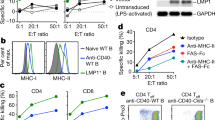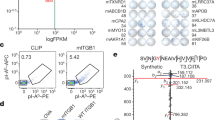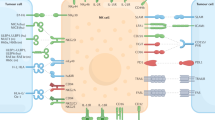Abstract
TYPE C RNA viruses are frequently present in murine tumours, but the nature of the association between these viruses and malignancy is uncertain. The oncogene theory1,2 contends that type C viruses possess oncogenic information and that malignancy is the result of activation of this genetic information. Alternatively, the expression of type C viruses in a tumour may be a consequence, rather than a cause, of the neoplastic change and may be beneficial to the host by providing for potential immunological detection and eradication of neoplastic cells3. If type C viral antigens are targets for an immune surveillance mechanism, then normal animals would be expected to show evidence of immune sensitisation against viral antigens expressed on the surface of tumour cells. Here, we present evidence that naturally occurring antibodies (NOA) cytotoxic for a type C virus releasing teratoma-derived cell line are directed against viral antigens.
This is a preview of subscription content, access via your institution
Access options
Subscribe to this journal
Receive 51 print issues and online access
$199.00 per year
only $3.90 per issue
Buy this article
- Purchase on Springer Link
- Instant access to full article PDF
Prices may be subject to local taxes which are calculated during checkout
Similar content being viewed by others
References
Huebner, R. J., and Todaro, G. J., Proc. natn. Acad. Sci. U.S.A., 64, 1087–1090 (1969).
Todaro, G. J., and Huebner, R. J., Proc. natn. Acad. Sci. U.S.A., 69, 1009–1010 (1972).
Martin, W. J., Cell. Immun., 15, 1–10 (1975).
Ross, J. E., Scolnick, E. M., Todaro, G. J., and Aronson, S. A., Nature new Biol., 231, 163–167 (1971).
Rowe, W. P., Pugh, W. E., and Hartley, J. W., Virology, 42, 1136–1139 (1970).
Martin, S. E., and Martin, W. J., Proc. natn. Acad. Sci. U.S.A., 72, 1036–1040 (1975).
Martin, S. E., and Martin, W. J., J. Immun. (in the press).
Martin, S. E., and Martin, W. J., Int. J. Cancer, 15, 658–664, (1975).
Hanna, M. G., Ihle, J. N., Batzing, B. L., Tennant, R. W., and Schenley, C. K., Cancer Res., 35, 164–171 (1975).
Herberman, R. B., and Aoki, T., J. exp. Med., 136, 94–111 (1972).
Aaronson, S. A., and Stephenson, J. R., Proc. natn. Acad. Sci. U.S.A., 71, 1957–1961 (1974).
Sato, H., Boyse, E. A., Aoki, T., Iritani, C., and Old, L. J., J. exp. Med., 138, 593–606 (1973).
Martin, W. J., and Martin, S. E., Nature, 249, 564–565 (1974).
Author information
Authors and Affiliations
Rights and permissions
About this article
Cite this article
MARTIN, S., MARTIN, W. Naturally occurring cytotoxic tumour reactive antibodies directed against type C viral envelope antigens. Nature 256, 498–499 (1975). https://doi.org/10.1038/256498a0
Received:
Accepted:
Published:
Issue Date:
DOI: https://doi.org/10.1038/256498a0
This article is cited by
-
Antibody formation and transient immune complex glomerulopathy in A-Strain mice with C1300 neuroblastoma tumors
Virchows Archiv B Cell Pathology (1978)
-
A cautionary note regarding Ia andH-2 typing of murine lymphoid tumors
Immunogenetics (1976)
Comments
By submitting a comment you agree to abide by our Terms and Community Guidelines. If you find something abusive or that does not comply with our terms or guidelines please flag it as inappropriate.



